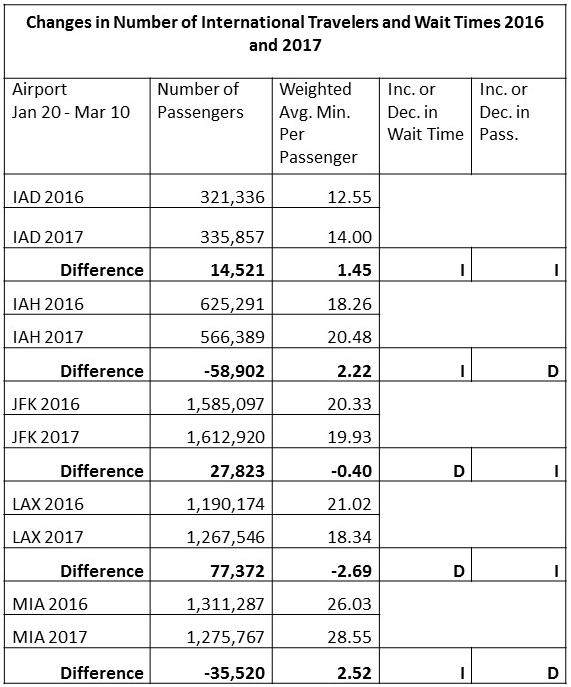Customs and Border Protection (CBP) is making progress in reducing wait times for processing international arrivals—but not at Miami International.
Conde Nast reported in November 2016 that CBP was moving to cut wait times for international arrivals by expanding preclearance, allowing some international travelers to be inspected before arriving in the United States. By inspecting people overseas, preclearance can eliminate some of the pressure at U.S. entry points, which speeds up processing for everyone. Long wait times impose an added cost and additional stress on airline passengers, and reducing airport wait times might even affect a traveler’s choice of airports when planning overseas itineraries. Jena Baker McNeill, senior director of government relations at the U.S. Travel Association told Conde Nast, “Convenience is always on the mind of travelers, and so [preclearance] would be a huge win” for fliers and airports.
So how are CBP wait times now, and are we seeing a seeing fewer or increasing numbers of international travelers?
For this analysis, I examined CBP wait time and passenger data for the time periods of January 20—March 10, 2016 and 2017. The airports examined are Washington’s Dulles (IAD), George Bush International in Houston (IAH), John F. Kennedy in New York (JFK), Los Angeles International (LAX), and Miami International (MIA). A summary of the results are shown in the table below.
For IAD, JFK, and LAX, the number of passengers adjudicated by CBP increased. The weighted average number of minutes passengers waited increased at IAD, decreased at JFK, and decreased at LAX. For IAH and MIA, the number of passengers adjudicated decreased but the wait times increased.
The most interesting insight from the analysis is that wait times at Miami International are still much higher than other airports; wait times are twice as long as at IAD. Passengers can expect to wait, on average, nearly 30 minutes at MIA.
This analysis cannot prove a cause/effect as to why airport wait times are still high at MIA, in spite of CBP’s concerted effort to reduce them. Regardless, the numbers suggest that passengers, should they have an alternative to Miami International, might consider an alternative destination, all other things considered equal.



